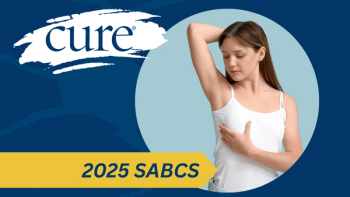
Should Breast Cancer in Young Women Be Treated Differently?
While breast cancer in young women appears to have similar characteristics, many experts agree that treating the type of breast cancer is more important than focusing on age at this point.
Even after Ghecemy Lopez, 32, discovered a lump in her right breast and had a mammogram, she still couldn’t imagine she had cancer. She thought breast cancer struck older women, not someone her age. She got the same impression from the admitting clerk at her mammogram who asked, “Why are you here?” But young women, as Lopez and many other women discover each year, can and do get breast cancer.
“When I heard, ‘You have cancer,’ I immediately thought, ‘This can’t be happening. I’m only 30,’” Lopez says. She postponed a trip home to Veracruz, Mexico, and waited before telling her family. “It’s so hard to tell your parents you have cancer.”
More than 290,000 women will be told they have breast cancer in the U.S. in 2013. While breast cancer in women under 40 is still relatively rare, comprising about 5 percent of all breast cancer cases, it still accounts for more than 13,000 newly diagnosed young women each year.
The challenge in treating and caring for these young patients is a relatively new topic, one that has evolved over the past decade. Later this month, the
Whether the result of this new focus is a publication, a conference or peer-to-peer support, those involved share common goals: focused research and support for young women dealing with age-specific short- and long-term consequences of breast cancer treatment.
According to medical professionals, breast cancers in younger women tend to be more aggressive, less likely to respond to hormonal therapy, more commonly harbor a mutation in the breast cancer susceptibility genes (BRCA1 and BRCA2) and can come with a worse prognosis.
Ethnicity may play a role as well. Both African-American and Hispanic women are more likely to be diagnosed at a later stage and have higher mortality rates than white women. Younger African-American women have a higher percentage of hormone-negative breast cancers, which tends to be more aggressive than hormone-positive. In one of the largest studies of Hispanic families with a history of breast and ovarian cancers, BRCA mutations were discovered in 25 percent of those with Hispanic ethnicity enrolled in the Northern California Breast Cancer Family Registry, a significant increase above the average 5 to 10 percent. In a separate study led by researchers from M.D. Anderson Cancer Center in Houston, 714 breast cancer patients of Mexican origin were surveyed and found that half had received a diagnosis before the age of 50.
While some question whether breast cancer in younger women is a different biological entity, the issue is still being debated.
“Whether or not breast cancer in young women is a distinct disease is still unknown, unclear and not necessarily factual,” says oncologist Ann H. Partridge, founder and director of the Dana-Farber Cancer Institute’s program for young women with breast cancer in Boston.
“The technology alone from the last few years has so significantly changed everything,” says Jennifer Litton, an oncologist at M.D. Anderson. “Now that we can look at underlying biology, I don’t focus exclusively on age.”
Tests, such as Oncotype DX, can help determine if patients need or would even benefit from chemotherapy. Other factors can also play a role in treatment decisions.
“When I see a young patient, I don’t immediately conclude that six months of chemotherapy is needed. Some young women don’t need anything other than surgery,” Litton says. “But I do see women in their 20s and 30s come in with underlying biology that is very aggressive. What this means is that we need to make sure that we treat them with equally aggressive treatment.”
At the 2012 San Antonio Breast Cancer Symposium, researchers presented a
Because treatments affect all individuals differently, it’s hard to make generalizations about a certain group based on factors such as age, but Partridge does emphasize that young women are more likely to be premenopausal, have triple-negative disease and have a BRCA mutation.
For women such as Lopez, who was diagnosed with triple-negative breast cancer and has a BRCA1 mutation, treatment began with chemotherapy followed by a bilateral mastectomy on her 31st birthday.
Lopez and her husband decided not to pursue egg preservation after her oncologist told them she might not be able to delay treatment for the time she would need to harvest eggs.
“That was harsh,” she says. “I had to give up my idea about being a mom.”
The potential loss of fertility is one of the many issues that comes with cancer diagnosis at a younger age. Undergoing chemotherapy or reconstructive surgery with toddlers underfoot, dealing with premature menopause, and establishing new dating relationships after cancer could also further impact an already stressful treatment and recovery.
One of Ghecemy’s many concerns was work. She’d just attained her master’s degree in education a few months before her diagnosis. She was working in government relations and teaching English as a second language every evening to immigrants. “Cancer messes up your social stability at work and with friends,” she says.
Programs, including the one developed by Partridge at Dana-Farber, hope to help younger breast cancer survivors adjust to treatment and its consequences. “Cancer is hard anyway, and it’s especially so in our youngest patients,” Partridge says.
Conferences tailored to this population, such as YSC’s
“My hope is that they leave knowing they’re not alone,” says YSC CEO Jennifer Merschdorf. “For many women, this will be the first time they will meet another woman in the same situation.”





